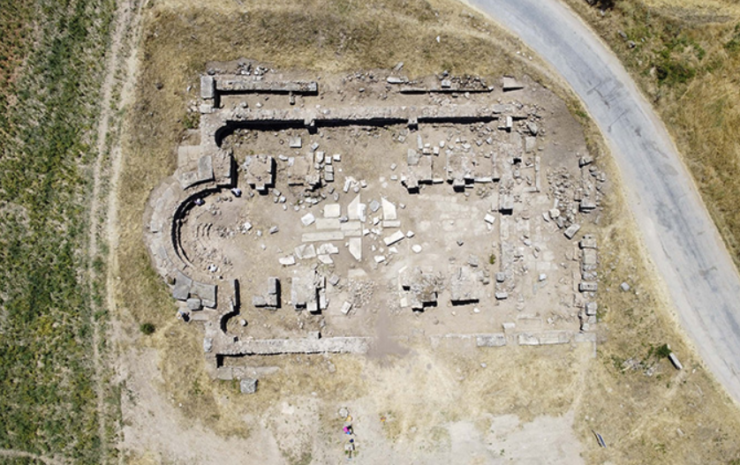Founded by Augustus, excavations continue in the ancient city of Sebaste in Uşak, Türkiye. The granary belonging to the episcopal center of the period was unearthed.
Excavations in the ancient city of Sebaste, which resumed last year after a 44 year hiatus, are being carried out under the direction of the Uşak Archaeology Museum. Uşak University Archaeology Department faculty members Assoc. Dr. Emre Taştemür and Assoc. Dr. Münteha Dinç also provide scientific support to the activities here.
This region is among the most important cities of the Roman period in Anatolia. Last year, the episcopal center of the period carried out environmental cleaning and some arrangements in the ‘Big Church’ and ‘Small Church’ areas. This year, the granary (granarium) section, which is thought to belong to the Eastern Roman Empire period, was reached in the north of the Small Church.
The name “Sebaste” was given here during the Roman Period. The settlement in this ancient city, which dates back to the Late Neolithic period, continued for 7 thousand years without interruption. During the Hellenistic period, it existed as a village settlement. The city gained its real fame with Augustus, the first emperor of Rome.
Assoc. Dr. Münteha Dinç told AA: “The famous Roman emperor Augustus named this city a Sebaste. Sebaste then became a very powerful center in the region. Roman emperors have a lot of interest in this city because of its location. We are right at the center of the roads from north to south, east to west. Sebaste is a trade center in this respect. It’s also at the center of military routes. We can say that it was an accommodation center and a resting place for armies. Therefore, the city has maintained its importance in every period.”
The two churches in the ancient city date back to the Eastern Roman Empire, but there are also remains of earlier periods in the architecture. The tomb stelae (a monolithic stone structure with a height taller than its width) in the area offer important clues about the history of the city.
For the granary found in the church during excavations, Dinç said, “We can say that Sebaste continued its glory during the Eastern Roman Empire and turned into a bishopric center. The granary is actually a storage area. It shows that there was also a living space here. It is important in terms of showing us areas such as the living space of the priests in the episcopal center here and the feeding arrangement.”
